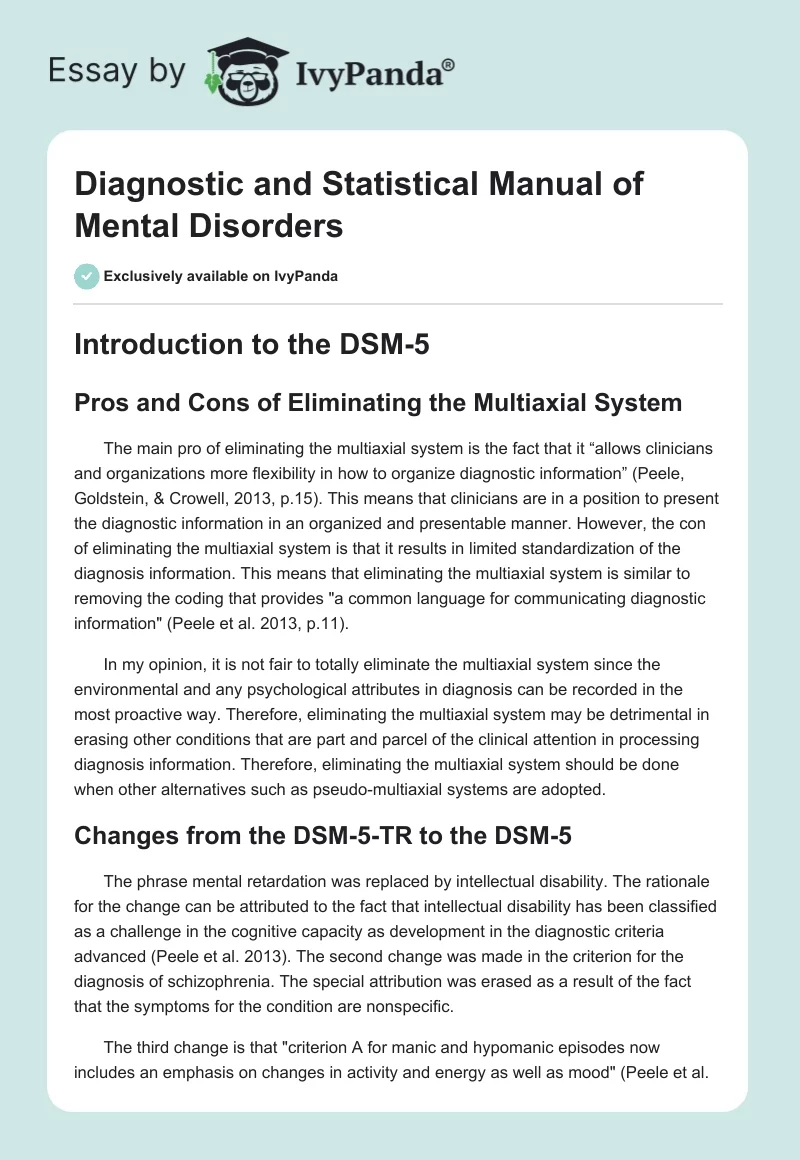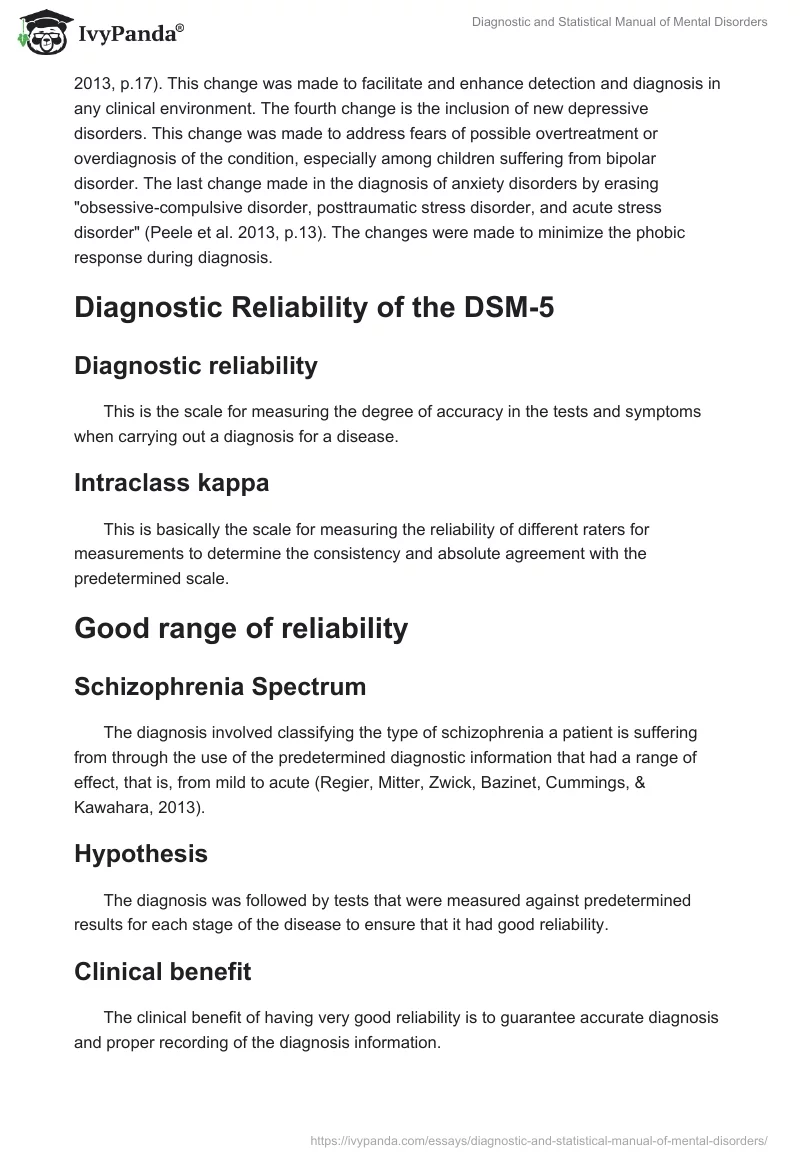Introduction to the DSM-5
Pros and Cons of Eliminating the Multiaxial System
The main pro of eliminating the multiaxial system is the fact that it “allows clinicians and organizations more flexibility in how to organize diagnostic information” (Peele, Goldstein, & Crowell, 2013, p.15). This means that clinicians are in a position to present the diagnostic information in an organized and presentable manner. However, the con of eliminating the multiaxial system is that it results in limited standardization of the diagnosis information. This means that eliminating the multiaxial system is similar to removing the coding that provides “a common language for communicating diagnostic information” (Peele et al. 2013, p.11).
In my opinion, it is not fair to totally eliminate the multiaxial system since the environmental and any psychological attributes in diagnosis can be recorded in the most proactive way. Therefore, eliminating the multiaxial system may be detrimental in erasing other conditions that are part and parcel of the clinical attention in processing diagnosis information. Therefore, eliminating the multiaxial system should be done when other alternatives such as pseudo-multiaxial systems are adopted.
Changes from the DSM-5-TR to the DSM-5
The phrase mental retardation was replaced by intellectual disability. The rationale for the change can be attributed to the fact that intellectual disability has been classified as a challenge in the cognitive capacity as development in the diagnostic criteria advanced (Peele et al. 2013). The second change was made in the criterion for the diagnosis of schizophrenia. The special attribution was erased as a result of the fact that the symptoms for the condition are nonspecific.
The third change is that “criterion A for manic and hypomanic episodes now includes an emphasis on changes in activity and energy as well as mood” (Peele et al. 2013, p.17). This change was made to facilitate and enhance detection and diagnosis in any clinical environment. The fourth change is the inclusion of new depressive disorders. This change was made to address fears of possible overtreatment or overdiagnosis of the condition, especially among children suffering from bipolar disorder. The last change made in the diagnosis of anxiety disorders by erasing “obsessive-compulsive disorder, posttraumatic stress disorder, and acute stress disorder” (Peele et al. 2013, p.13). The changes were made to minimize the phobic response during diagnosis.
Diagnostic Reliability of the DSM-5
Diagnostic reliability
This is the scale for measuring the degree of accuracy in the tests and symptoms when carrying out a diagnosis for a disease.
Intraclass kappa
This is basically the scale for measuring the reliability of different raters for measurements to determine the consistency and absolute agreement with the predetermined scale.
Good range of reliability
Schizophrenia Spectrum
The diagnosis involved classifying the type of schizophrenia a patient is suffering from through the use of the predetermined diagnostic information that had a range of effect, that is, from mild to acute (Regier, Mitter, Zwick, Bazinet, Cummings, & Kawahara, 2013).
Hypothesis
The diagnosis was followed by tests that were measured against predetermined results for each stage of the disease to ensure that it had good reliability.
Clinical benefit
The clinical benefit of having very good reliability is to guarantee accurate diagnosis and proper recording of the diagnosis information.
Questionable score
Bipolar diagnosis
It was unclear on the degree of bipolar condition since the results were confusing for different tests (Regier et al. 2013).
Hypothesis
The diagnosis was not followed by tests measured against predetermined results for each stage of the disease.
Clinical benefits
There were no clinical benefits since the variance between different test results was uneven (Regier et al. 2013).
References
Peele, R., Goldstein, G., & Crowell, R. (2013). DSM-5: What It Will Mean to Your Practice. Psychiatric Times, 3(4), 7-21. Web.
Regier, J. C., Mitter, C., Zwick, A., Bazinet, A. L., Cummings, M. P., & Kawahara, Y. (2013). DSM-5 field trials in the United States and Canada, Part II: test-retest reliability of selected categorical diagnoses. PLoS ONE, 8(3), 23-39. Web.


